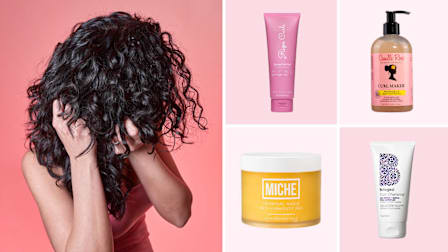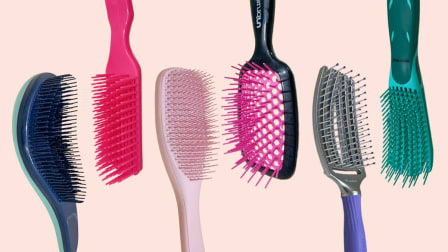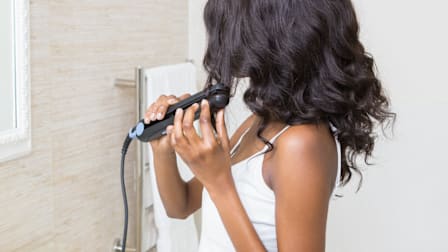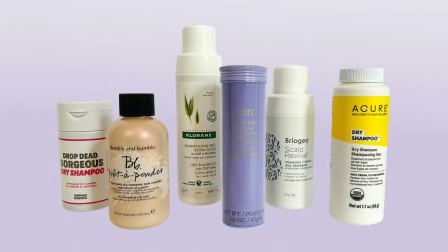Fixes for Common Hair Problems as You Age
Thinning strands? Wiry texture? What to do.
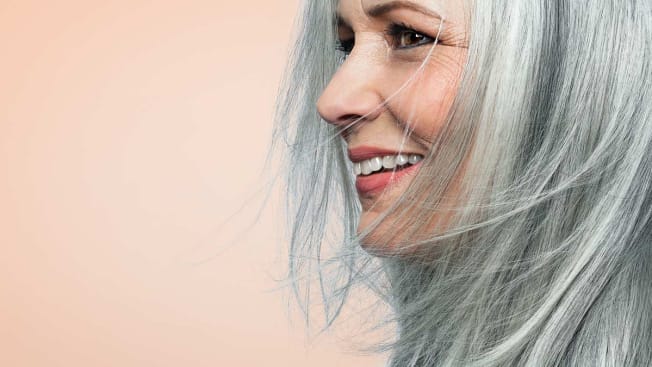
The ways in which hair changes as we age aren’t always welcome. Nor are they entirely within our control.
“Many changes men and women see in their hair are thought to be the result of reduced activity of the stem cells in the hair follicle,” says dermatologist Neelam Vashi, MD, director of the Boston University Cosmetic and Laser Center at Boston Medical Center. “As we get older, those stem cells don’t function as well or as quickly as they used to.”
Hormonal shifts (which affect women more than men) later in life may also play a role. While you can’t turn back time, you can take steps to help your hair regain some of its youthful fullness and luster. Here’s how to handle three typical issues both men and women face.
The Problem: The Color
Although everyone talks about hair “turning gray,” the strands that are already on your head aren’t actually changing color. Rather, new ones grow in gray or white, thanks to the age-related loss of melanocytes—“pigment-producing cells in the base of the hair follicle,” Vashi says.
The Problem: You're Losing Hair
Hair thinning is incredibly common. At older ages, at any given time, “more hairs are found in the resting or shedding stages and fewer of them are in the growth stage,” Vashi says. And “the diameter of individual strands also becomes smaller, making hair look less full,” Vashi says.
The Fix: Volumizing shampoos, conditioners, and mousses are unlikely to have much effect, Cohen says. But a dry texturizing spray “will add thickness and makes hair look temporarily fuller,” she says.
To slow hair loss and stimulate new growth, minoxidil is an option. Topical minoxidil is approved by the Food and Drug Administration for pattern hair loss in men and women and “produces very good results,” says Elise A. Olsen, MD, founder and director of the Hair Disorders Research and Treatment Center at Duke University Medical Center in Durham, N.C. A 2017 review published in the Journal of the American Academy of Dermatology found that it increased fullness by about 15 hairs per square centimeter for men and about 12 hairs per square centimeter for women. But you have to apply it to your scalp twice a day—which can be messy.
Minoxidil pills are FDA-approved for hypertension but used off-label at much lower doses for hair loss. At dosages of up to 2.5 mg per day for women and 5 mg per day for men, it achieves higher blood levels than topical, which can make it more effective, Olsen says. But, she cautions, there may be side effects (like changes in heart rate and blood pressure), so it’s wise to start with the lowest dose possible and take it under a doctor’s supervision.
The Problem: Frizzy, Wiry Hair
“Gray hairs sometimes grow in coarser, which can make hair look frizzy and untamed,” Cohen says. It may just be age, but environmental factors also play a role. Chemicals and heat can affect how hair ages. And time in the sun “can degrade proteins in the hair and also lead to changes that affect the texture of new strands,” Vashi says.
The Fix: For coarse, curly hair, Cohen suggests trying a professional keratin treatment. A stylist applies keratin solution and uses heat to seal it to the keratin (protein) in the outer layer of the hair, making the hair appear straighter and smoother. (Be sure to seek out salons that use formulas without potentially toxic formaldehyde.)
The procedure can take a few hours and cost several hundred dollars, but the results last for months. At home, you can use an anti-humidity/anti-frizz spray or serum that contains heat-activated polymers. “They repel moisture in the air,” Cohen says, “and if hair doesn’t absorb that moisture, it gets less frizzy.”
Editor’s Note: This article also appeared in the January 2024 issue of Consumer Reports On Health.

















